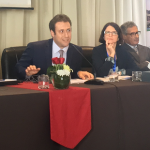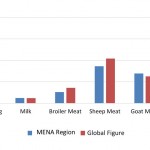Rachel Bahn and Rami Zurayk, American University of Beirut
Eckart Woertz, Barcelona Centre for International Affairs (CIDOB) and Sciences Po
The volume Crisis and Conflict in Agriculture, published by CABI in September 2018, explores the intersection of agriculture, crisis, and conflict. It considers both over-arching themes, as well as detailed case studies drawn from a range of contexts. Source: IFPRI Egypt Country Office



